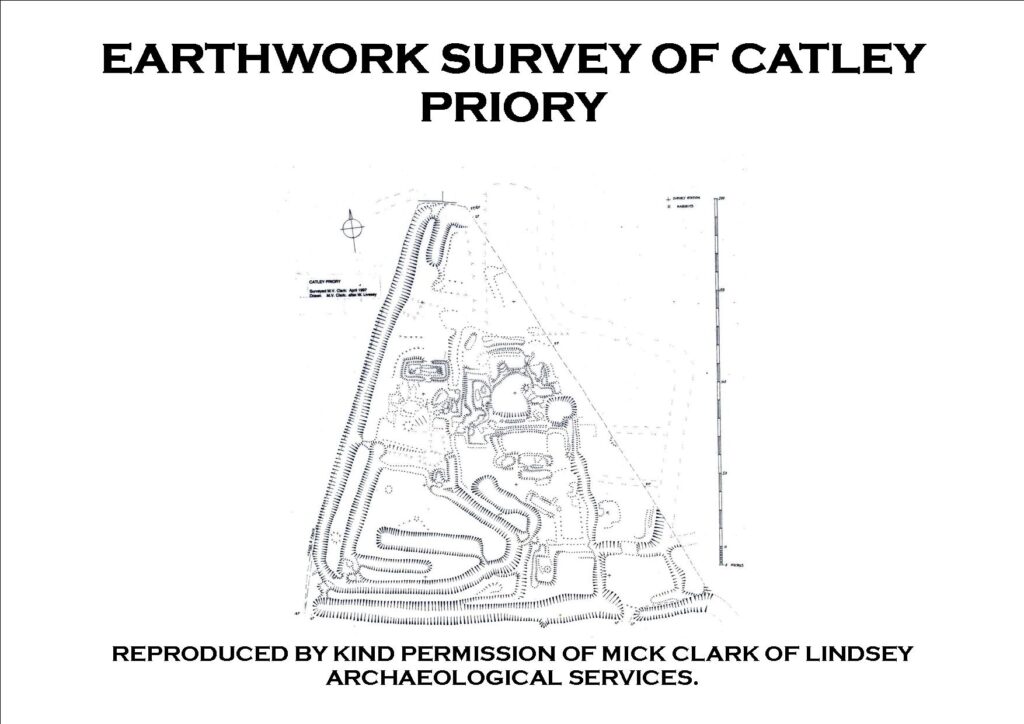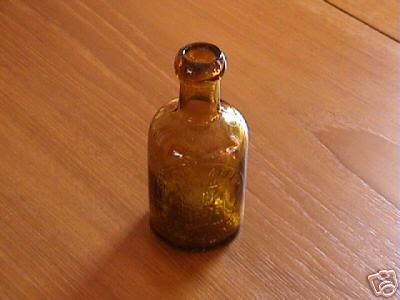
The Gilbertine Priory of St. Mary Catley, was founded as a double house between 1148 and 1154 by Peter of Billinghay. He endowed it with:
- the whole island of Catley
- the site of a grange and some arable land at Walcote
- the church of Billinghay and the chapel of Walcote
- pastyrage for 400 sheep in the two townships, and rights of fishing on Walcote marsh
Peter of Billinghay may have been motivated by the economic benefits that his estate would reap from the land improvements at which the Gilbertines excelled. The ditching and draining that ensued would have enhanced the quality of much of his pasture in the area. None of the conventual buildings are upstanding, and only one notice has been found of them in medieval sources and that merely refers to a burial in the Chapter House. A map of the earthworks below is given to give some idea of the size.

The number of inmates was limited by St. Gilbert to sixty nuns and lay sisters and thirty five canons and lay brothers. The priory was always one of the poorest houses of the order of Sempringham. In 1254 the spiritualities were assessed at £20, the temporalities at £30 12s. 10d. At the beginning of the 14th century the average yearly sale of wool was seven sacks, which added considerably to the income of the nuns and canons.
In 1303 the prior held half a knight’s fee in Brauncewell, 0ne-third in Dunsby, a quarter in Billinghay and Walcote, a quarter in Digby. one fifth of half in Ingleby, one-fifth and one-twenty-fourth in Hemswell, one-eighth in Dorrington, one-tenth and one sixtieth of one in Glentworth and one-twenty-fourth of another. In 1401 he also held one-seventh in Scopwick.
By 1338, the house was in serious financial straits, and Edward iii pardoned the payment of the tenth, £5 11s. 3and quarter d. Seven years later the prior, canons and nuns again petitioned to be excused from the tax. They urged that by fires and murrain of their animals, they were so impoverished that they had neither crops or goods for their sustenance. The loss of tenants and mortality among their sheep after the Black Death no doubt greatly increased the embarrassment of the priory.
In 1535 the net valuation of the property amounted to £38 18s. 6d, of which £8 4s. 10d was drawn from the rectories of Billinghay and Digby. The demesne lands were only worth £4 a year.
The Priory was dissolved and the house was surrendered by the prior and two canons on 25 September 1538. Pensions were granted to the prioress and four nuns.
In the hand of the crown bailiff four years later the property brought in £38 18s. 11d., and included, besides the rectories, the grange of Scopwick, and lands and tenements in Billinghay, Timberland, Walcote, Digby, Ingleby, Saxilby, Lincoln and Rowston. The site was eventually acquired by Robert Carre of Sleaford.
Some time later the site “acquired a new interest from the discovery at a depth 80 feet of natural spring of mineral water, very similar in its character to the well-know German seltzer”. The date of the business started is not known but it was advertised in the Kelly’s Directory of 1889. The Catley Abbey Natural Seltzer Water Company was registered in Sheffield in 1909 but had ceased production in 1937. Some of the rubbish used to fill the ditches in recent times includes Catley Abbey Mineral Water bottles (see below) and it is just possible that some of the foundations visible in aerial photographs are related to premises used in the collection and bottling of this water.

